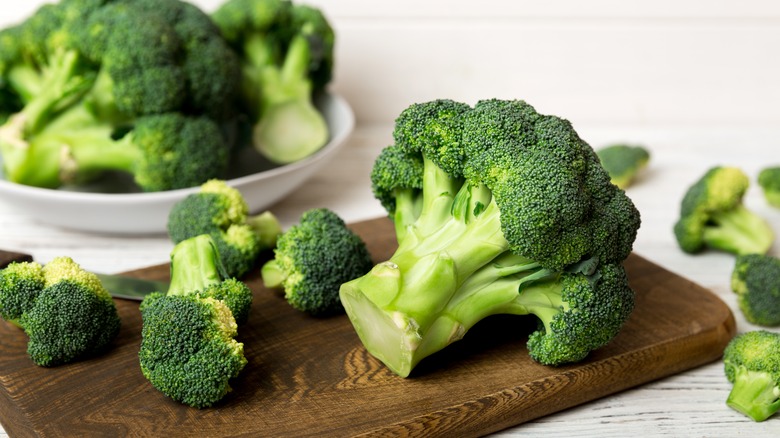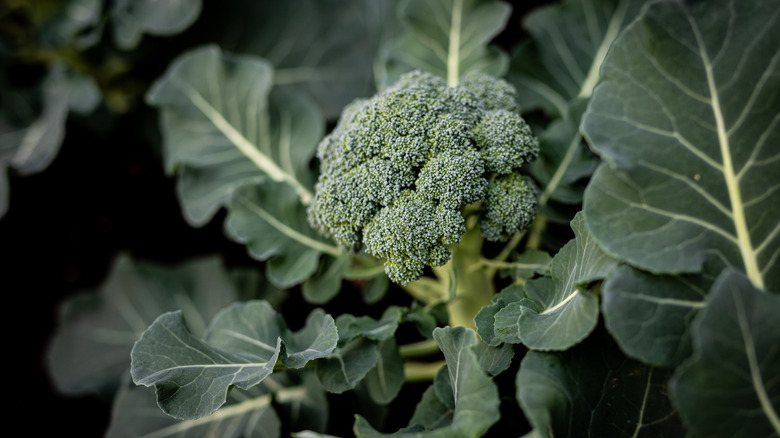The Reason You'll Never Find Wild Broccoli
Broccoli is a man-made vegetable. That's right. We said it. Now, before anyone claps back, let's be clear. The fact that broccoli needed a little nudging along its way to becoming the most popular vegetable in the United States does not mean it's a genetically modified organism. According to Alliance for Science, broccoli is the result of selective breeding, a commonsense approach to cultivation in which farmers do things like choose to harvest seeds from the best-yielding or hardiest plants. In effect, they are creating a system of artificial selection, but the practice falls far short of a GMO, which the Non-GMO Project defines as organisms resulting from genetic engineering or transgenic technology applied to create combinations that do not occur in nature or through traditional crossbreeding methods.
According to Indiana Public Media, broccoli is a human invention bred from Brassica oleracea (wild cabbage) by forcing it to blossom, harvesting better-tasting buds, and cultivating new plants. From there the process is repeated, always choosing the most palatable variety. In the case of wild cabbage, the controlled growth cycle eventually led to the vegetable we know as broccoli, along with its cousins, cauliflower, kohlrabi, kale, and Brussels sprouts.
Selective breeding in the plant world
While we know how broccoli was invented, we don't know exactly. According to Gardening in Orange County New York, early versions of broccoli likely made their debut in the Mediterranean region sometime in the 6th century B.C. where it continued to evolve, with a little help from humans, well into the 16th century. Selective breeding is a long and time-consuming process involving seed selection in addition to asexual propagation from cuttings, grafting, and layering utilizing only naturally occurring gene variations (via Your Genome).
The Brassica oleracea, or wild cabbage, that eventually produced broccoli is also known as wild mustard. The selective breeding process that resulted in the creation of broccoli focused on improving the plant's flowers (via Gardening in Orange County New York). Selective breeding with a focus on other parts of Brassica oleracea produced additional cultivars including kale and collard greens from the plant's leaves and Brussels sprouts from plants with larger lateral bulbs. In addition to producing new varieties of vegetables, selective breeding is also a means to creating disease- and pest-resistant plants or varieties that can withstand harsh growing conditions.

